 Image search results - "World" Image search results - "World" |

Tokyo Dome on March 3, 2006, the first day of the WBC's Asian Round.
|
|

Tokyo Dome
|
|

Front entrance to Tokyo Dome. Japan plays its first WBC game and the opponent is China.
|
|

Shinkyo Sacred Bridge, Nikko 神橋
|
|

Chinese team is introduced.
|
|
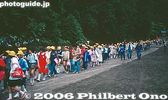
Kids on school trip along Omotesando 表参道
|
|

Japan's National Anthem is played.
|
|
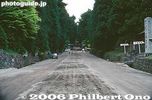
A National Treasure and World Heritage Site, Nikko's magnificent shrines and temples overshadow any other attractions Tochigi has. The Toshogu Shrine is especially famous and also serves as Tokugawa Ieyasu's mausoleum. Omotesando 表参道
|
|

Tommy Lasorda after throwing the flubbed first pitch.He just threw the ball right on the ground like he wanted to throw it away. It wasn't a pitch at all. What was his problem?
|
|

Horse stable
|
|

Crowd behind homeplate. 16,000 yen seats.
|
|
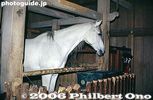
Horse stable
|
|

China at bat.
|
|
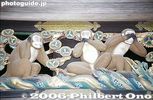
Hear, speak, and see no evilWood carving on the horse stable
|
|

Pitcher Koji Uehara, originally from the Yomiuri Giants.Unfortunately, Daisuke Matsusaka did not pitch this night.
|
|

Five-story pagoda 五重塔
|
|
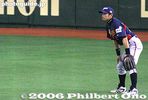
Ichiro in right field.
|
|

Japan's most famous temple, with the world's oldest wooden buildings (over 1,300 years old), is also the country's first World Heritage Site. Also called Ikaruga-dera, the temple is the headquarters of the Shotoku-shu Buddhist Sect. Path to
|
|

Oriental zodiac (hare) carving on five-story pagoda
|
|

Ichiro at bat
|
|

Admission charged. The 1,000 yen ticket gets you into the three major sights.
|
|
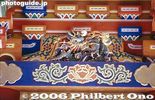
Oriental zodiac (dragon) carving on five-story pagoda
|
|

Ichiro at bat
|
|

Nandaimon Gate 南大門
|
|
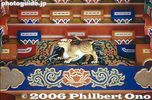
Oriental zodiac (tiger) carving on five-story pagoda
|
|
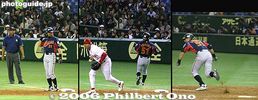
Right to left: Ichiro hits and reaches 1st base.
|
|

Horyuji temple, Nandaimon Gate, National Treasure 南大門(国宝)
|
|

Niomon
|
|
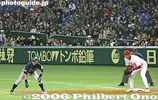
Ichiro at 1st base.
|
|

Founded in 607 by Prince Shotoku Taishi, Horyuji is one of Japan's most famous temples, with the world's oldest wooden buildings (over 1,300 years old). Japan's first World Heritage Site.
|
|
|
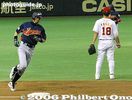
Thanks to a homer by a teammate, Ichiro trots past 3rd base.
|
|

Also called Ikaruga-dera, the temple is the headquarters of the Shotoku-shu Buddhist Sect founded by Shotoku Taishi.
|
|
|
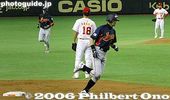
Ichiro and another go round 3rd base as China looks on helplessly.
|
|

西院伽藍
|
|
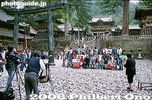
Group photo
|
|

Ichiro reaches home as the umpire makes sure Ichiro steps on homeplate.
|
|
|
|
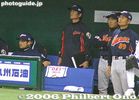
Head coach Sadaharu Oh (extreme right).Also on the left, see Ichiro in the dugout.
|
|

Map of Horyuji. Large complex of buildings. Only two precincts are open to the public.
|
|
|

China's pitcher and catcher in a conference.
|
|

Horyuji and World Heritage Site (Japan's first) marker
|
|

Dragon on ceiling that squeaks when you clap.
|
|
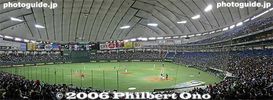
Tokyo Dome
|
|

Sai-in Garan West Precinct 西院伽藍
|
|
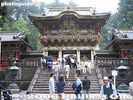
Yomeimon Gate, National Treasure 陽明門
|
|

Ichiro at bat. Japan wins 18-2.
|
|

三経院 National Treasure
|
|
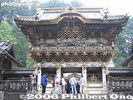
Yomeimon Gate, National Treasure, Nikko 陽明門
|
|

Horyuji temple Five-Story Pagoda and Kondo Hall, National Treasures 五重塔 金堂
|
|

Rear of Yomeimon Gate
|
|
|
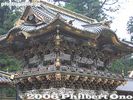
Rear of Yomeimon Gate
|
|

Five-Story Pagoda and Kondo Hall, National Treasures 五重塔 金堂
|
|

Yomeimon Gate
|
|
|

Yomeimon Gate
|
|

Goju-no-To (Five-Story Pagoda), National Treasure, Horyuji. The size of the roof gets smaller toward the top of the structure. 五重塔 仏舎利
|
|
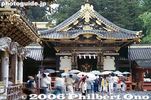
Portable shrine storehouse
|
|

Horyuji Goju-no-To (Five-Story Pagoda) National Treasure. Houses a few bones of Shakyamuni Buddha. 五重塔
|
|
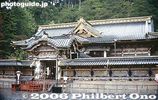
Karamon
|
|

The Five-Story pagoda has a thick wooden pillar in the center going from the bottom to the top. Only the top part of the building is in contact with the central pillar and works to counterbalance earthquake swaying.
|
|

Karamon close-up
|
|

You can enter or see inside the buildings, but no photography is allowed inside.
|
|

Sleeping cat
|
|

Daikodo Hall and Five-Story Pagoda, National Treasures 五重塔
|
|

Sleeping cat 眠り猫
|
|
|
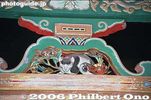
Sleeping cat 眠り猫
|
|
|
|
|
|
|
|
|
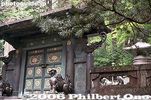
Tokugawa Ieyasu's mausoleum
|
|
|
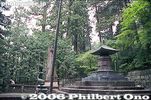
Tokugawa Ieyasu's mausoleum
|
|

Horyuji temple Kondo Main Hall, the world's oldest wooden building at 1,300 years old. National Treasure 金堂
|
|

Kondo Main Hall, National Treasure and Horyuji's most important building. However, on January 26, 1949, much of the first floor was destroyed by accidental fire. 金堂
|
|

Kondo Main Hall houses 13 Buddha statues. 金堂
|
|

Kondo Main Hall, National Treasure. It has some Chinese design elements. 金堂
|
|

Kondo Main Hall, National Treasure 金堂
|
|

Kondo Main Hall, National Treasure 金堂
|
|
|
|
|
|

To Daikōdō Hall
|
|

Daikōdō Hall, National Treasure. Houses Buddha statues. 大講堂
|
|

Horyuji temple, Daikōdō Hall, National Treasure 大講堂
|
|

Lantern
|
|

Lantern relief
|
|

Chūmon Gate, National Treasure 中門
|
|

Chūmon Gate, National Treasure 中門
|
|

Even the corridor is a National Treasure. Has about 150 wooden pillars. 西院伽藍の廻廊
|
|

Chūmon Gate and Kondo Hall
|
|

Corridor and Chūmon Gate 西院伽藍の廻廊
|
|

National Treasure
|
|
|
|
|

Daiho-zoin Museum. Admission included in the 1,000 yen ticket. 大宝蔵院
|
|

Daiho-zoin Museum 大宝蔵院
|
|

Tōdaimon Gate, National Treasure 東大門
|
|

Path to Yumedono Pavilion
|
|

Path to Yumedono Pavilion
|
|

Path to Yumedono Pavilion
|
|

Gate to Yumedono Pavilion
|
|

Ticket gate to Yumedono. Admission included in the 1,000 yen ticket.
|
|

Yumedono Pavilion, National Treasure dedicated to Shotoku Taishi. Built on the site of Prince Shotoku's palace. 夢殿
|
|

Horyuji temple, Yumedono Pavilion, National Treasure. The Nippon Budokan martial arts hall in Tokyo was designed after this pavilion. 夢殿
|
|

Hall of Paintings has the Illustrated Biography of Prince Shōtoku (National Treasure), masterpiece 11th century wall painting depicting Shotoku Taishi's life episodes bordering on legend and myth since he was later revered as a Buddha by Horyuji. �
|
|

Hall of Paintings. The original painting is preserved at Tokyo National Museum. Official video of the painting: https://youtu.be/sJB-03HQMNA 国宝 聖徳太子絵伝 絵殿、舎利殿
|
|

Bell tower in East Precinct 東院鐘楼
|
|

Bell tower in East Precinct 東院鐘楼
|
|

東院鐘楼
|
|

Signs to other temples
|
|

June 9, 2011 (Day 6): Nagahama Port at around 8 am. This was the only day I accompanied the rowers on a motorboat to take pictures and videos.
|
|

Leaving Nagahama Port at around 8:30 am. Photos you see here are only part of the total number of photos I gave to Seta Rowing Club for distribution.
|
|

These blue boat landing decks are portable and were brought here by truck.
|
|
|

Leaving Nagahama.
|
|
|
|
|

Lead boat
|
|

Rowing past Nagahama Dome, a sports and event complex.
|
|

Rowing off Maibara in northern Shiga. The tall white tower belongs to an elevator manufacturer for testing their elevators. Maibara is best known for Mt. Ibuki and Shiga's one and only shinkansen bullet train station.
|
|
|
|

Rowing to Hikone.
|
|
|
|

Rowing past Hikone View Hotel and the Japan Center for Michigan Universities or JCMU (green roof).
|
|

JCMU is an educational facility for college students mainly from Michigan to study in Japan. Shiga and the US state of Michigan are sister states. Many cities in Shiga have sister-city ties with cities in Michigan.
|
|
|

Approaching Matsubara Beach in Hikone.
|
|

Matsubara Beach in Hikone, a rest stop.
|
|
|

Matsubara Beach in Hikone, a rest stop.
|
|
|

In summer, Matsubara Beach is popular with swimmers and a fireworks display offshore sees huge crowds filling the beach.
|
|

Leaving Matsubara Beach in Hikone.
|
|
|

Rowing past Hikone Castle atop a hill.
|
|

Heading for Takeshima, a small island about 6.5 km off Hikone.
|
|
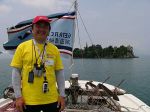
Masaki "Follow Me" Unose on the lead boat going to Takeshima island.
|
|

Takeshima is a small island with only Nichiren Buddhist temple and the priest's family living on the island. Accessible by boat from Hikone, Shiga Prefecture.
|
|

The island is noted for its giant stone monument inscribed with the prayer words "Namu Myo-horenge-kyo" from the Lotus Sutra.
|
|

Takeshima means "Island of Many Views" because it looks dramatically different from different angles.
|
|
|

Approaching Satsuma Beach, the final stop for the day.
|
|

Approaching Satsuma Beach.
|
|

Satsuma Beach in Hikone.
|
|

Hot rowers in a cool Lake Biwa.
|
|

Shabu-shabu lunch in Hikone with Omi beef. People had questions about how to eat the food. Cook the meat, vegetables, and udon noodles in the little shabu-shabu pot of boiling water, then dip into the sauce. One sauce for the meat, another for the udon.
|
|

After lunch, the group visited Hikone Castle and Genkyuen Garden. Hikone Castle is famous for cherry blossoms and Hiko-nyan (see next photo).
|
|

Watching Hiko-nyan, Hikone Castle's official mascot which is wildly popular. He performs daily inside Hikone Castle Museum. He is a white cat with a samurai helmet.
|
|

Steep stairs inside Hikone Castle tower.
|
|
|

Top floor of Hikone Castle tower. Hikone Castle's last lord was Ii Naosuke, the Chief Minister of the Tokugawa samurai government. He was the one who agreed to open Japan to the USA in 1858 after Commodore Perry visited.
|
|
|
|

My video of the the group rowing from Nagahama to Hikone (Satsuma) on June 9, 2011.
|
|

June 10, 2011 (Day 7): Satsuma Beach in Hikone. Someone camped here overnight to watch over the boats.
|
|

Preparing to leave Satsuma Beach.
|
|
|
|
|

Leaving Satsuma Beach.
|
|
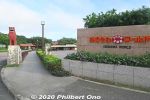
Okinawa World is a fairly large theme park centering on a large underground cavern called Gyokusendo. Above ground, there are attractions featuring Okinawan culture including traditional architecture, traditional crafts, habu snake show, and Eisa drum show. Major tourist attraction in the southern part of Okinawa island.
|
|
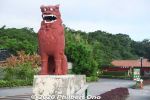
Seesaa at the entrance of Okinawa World.
|
|
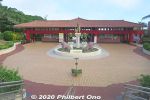
Okinawa World front gate.
|
|
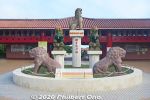
Okinawa World's front gate is decorated by five seesaa/shisa to ward off evil and bring in good fortune.
|
|
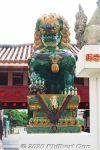
Chinese-style tri-color shisa with glazed finish. Made in China and originally decorated the Chinese Pavilion at the Tsukuba Expo '85 in Ibaraki Prefecture.
|
|
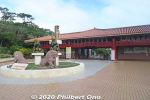
Okinawa World charges ¥2,000 admission. Open 9 am to 5 pm. Note that the park might be closed if there is a surge of Covid cases on Okinawa.
|
|
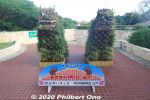
Pair of shisa after entering the Okinawa World gate.
|
|
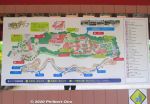
Map of Okinawa World. Many attractions above the cavern. When you buy your ticket, find out when the next habu snake show will be. See it first if it will start soon. See the habu show or cavern first which are near the front gate. Also find out the Eisa drum show time. Largest building is the shopping mall and restaurant complex which you can see last.
|
|
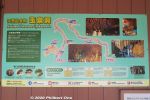
Map of Gyokusendo Cavern. Many natural features have names. After getting out of the cavern, you can go across the park toward the main gate and see the Kingdom Village.
|
|
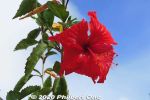
Red hibiscus at Okinawa World.
|
|
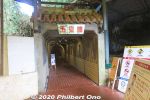
Entrance to Gyokusendo Cavern or Cave. 玉泉洞
|
|
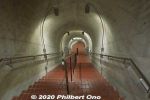
Steps down to Gyokusendo Cavern.
|
|
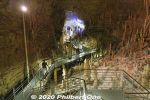
The main attraction of Okinawa World is Gyokusendo (玉泉洞), one of the largest limestone caverns in Japan. It's cooler in here (21˚C), so it's great in summer.This section is called Toyo Ichido. 東洋一洞
|
|
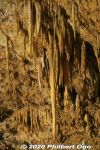
The part of the cavern open to the public is 890 meters long. Takes about 30 min. to walk through it. Diverse features and stalactites everywhere with colored lighting.
|
|
|
|
|
|
|
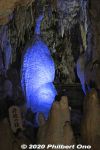
Lots of blue lighting.
|
|
|
|
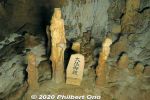
"Buddha statues"
|
|
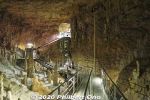
The cavern basically follows an underground stream. Tourists can walk on this walkway. It's always wet and water dripping.
|
|
|
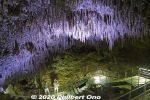
"Ceiling of Spears" 槍天井
|
|
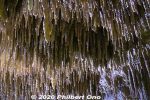
"Ceiling of Spears" 槍天井
|
|
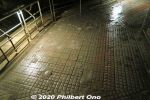
Ice on the walkway.
|
|
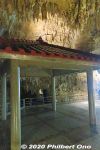
Rest house in a cavern.
|
|
|
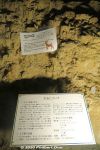
Deer bone fossils.
|
|
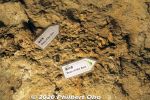
Deer bone fossils.
|
|

Where the stalactites are too long, they had to be cut to make way for tourists.
|
|
|
|
|
|
|
|
|
|
|
|
|
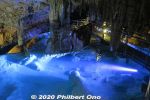
Inside Okinawa World's Gyokusendo Cavern, this is called the Blue Spring. Perhaps the prettiest spot of all. 青の泉
|
|
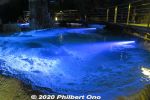
Blue Spring is also a limestone dam.
|
|
|
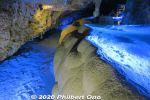
Blue Spring limestone dam.
|
|
|
|
|
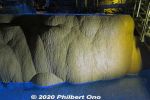
Golden rock
|
|
|
|
|
|
|
|
|
|
|
|
|
|
|
|
|
|
|
|
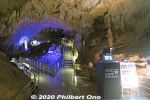
Take a selfie here.
|
|
|
|
|
|
|
|
|
|
|
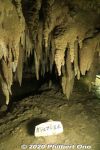
Banyan tree formation
|
|
|

Japanese mitten crab, one of the creatures that live in the cavern. モクズガニ
|
|

Freshwater goby, one of the creatures that live in the cavern. ヨシノボリ
|
|
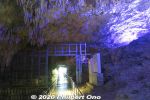
Nearing the cavern exit.
|
|
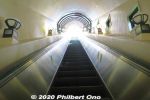
At the end of the Gyokusendo Cavern is a long escalator going back up to ground level for the exit.
|
|

Habu Museum Park is another major attraction of Okinawa World. Habu is a venomous pit viper endemic to the Okinawan and Amami islands. There are a number of species.
|
|
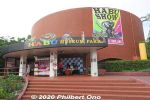
Habu Museum Park has an educational museum about the habu, a zoo of habu and other snakes, and a small hall for the habu snake show. First find out what time the next habu show will be.
|
|
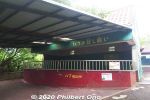
Habu zoo.
|
|
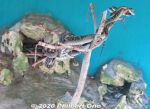
The Habu Museum has live habu on display. Nocturnal, so they were sleeping. Habu are venomous vipers in Okinawa.
|
|
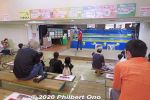
Also popular in Okinawa World is the Habu Museum Park and Habu Show. Habu is Okinawa's venomous snake. Habu Theater for the 20-min. habu show a few times/day.
|
|

Okinawa World's Habu show was interesting, but not particularly thrilling. The viper is not like a trained monkey doing tricks for a treat each time. The snake doesn't understand such a concept.
|
|

The trainer explained about the habu while handling it with a hooked pole.
|
|
|
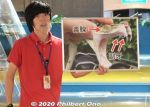
The habu's rear pair of fangs excrete the venom.
|
|
| 783 files on 4 page(s) |
1 |
 |
|